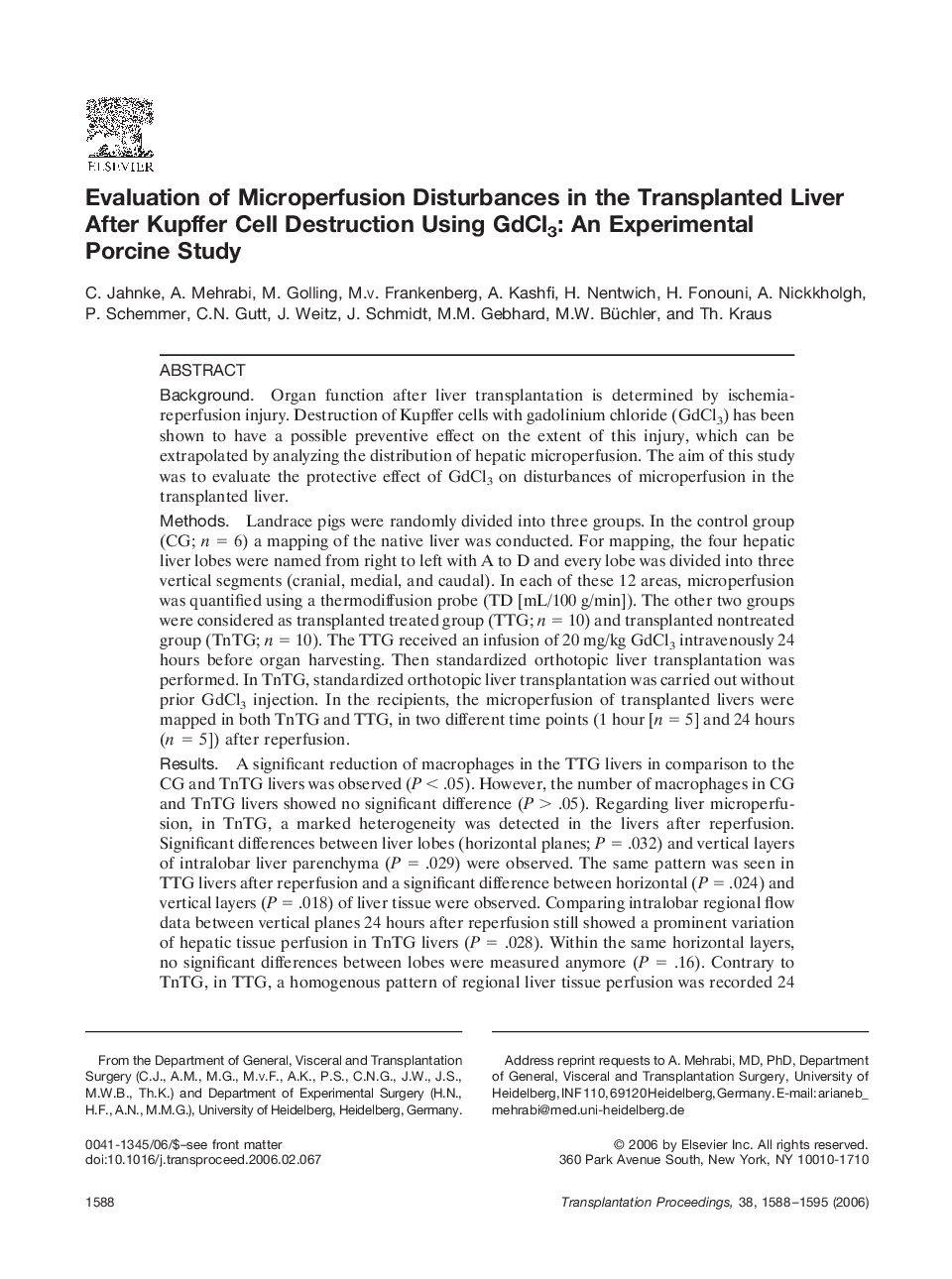| Article ID | Journal | Published Year | Pages | File Type |
|---|---|---|---|---|
| 4263496 | Transplantation Proceedings | 2006 | 8 Pages |
BackgroundOrgan function after liver transplantation is determined by ischemia-reperfusion injury. Destruction of Kupffer cells with gadolinium chloride (GdCl3) has been shown to have a possible preventive effect on the extent of this injury, which can be extrapolated by analyzing the distribution of hepatic microperfusion. The aim of this study was to evaluate the protective effect of GdCl3 on disturbances of microperfusion in the transplanted liver.MethodsLandrace pigs were randomly divided into three groups. In the control group (CG; n = 6) a mapping of the native liver was conducted. For mapping, the four hepatic liver lobes were named from right to left with A to D and every lobe was divided into three vertical segments (cranial, medial, and caudal). In each of these 12 areas, microperfusion was quantified using a thermodiffusion probe (TD [mL/100 g/min]). The other two groups were considered as transplanted treated group (TTG; n = 10) and transplanted nontreated group (TnTG; n = 10). The TTG received an infusion of 20 mg/kg GdCl3 intravenously 24 hours before organ harvesting. Then standardized orthotopic liver transplantation was performed. In TnTG, standardized orthotopic liver transplantation was carried out without prior GdCl3 injection. In the recipients, the microperfusion of transplanted livers were mapped in both TnTG and TTG, in two different time points (1 hour [n = 5] and 24 hours (n = 5]) after reperfusion.ResultsA significant reduction of macrophages in the TTG livers in comparison to the CG and TnTG livers was observed (P < .05). However, the number of macrophages in CG and TnTG livers showed no significant difference (P > .05). Regarding liver microperfusion, in TnTG, a marked heterogeneity was detected in the livers after reperfusion. Significant differences between liver lobes (horizontal planes; P = .032) and vertical layers of intralobar liver parenchyma (P = .029) were observed. The same pattern was seen in TTG livers after reperfusion and a significant difference between horizontal (P = .024) and vertical layers (P = .018) of liver tissue were observed. Comparing intralobar regional flow data between vertical planes 24 hours after reperfusion still showed a prominent variation of hepatic tissue perfusion in TnTG livers (P = .028). Within the same horizontal layers, no significant differences between lobes were measured anymore (P = .16). Contrary to TnTG, in TTG, a homogenous pattern of regional liver tissue perfusion was recorded 24 hours after reperfusion. Comparison of TD data on the liver regions showed no significant microperfusion differences in either horizontal (P = .888) or vertical (P = .841) layers.ConclusionsApplication of GdCl3 resulted in a significant reduction of Kupffer cells. Twenty four hours after transplantation microperfusion showed a homogeneous pattern, which constituted an earlier and better recovery of the transplanted liver. Therefore, destruction of Kupffer cells reduced ischemia-reperfusion injury and seemed to be responsible for the early recovery of microperfusion disturbances and thus for an improvement of graft function.
